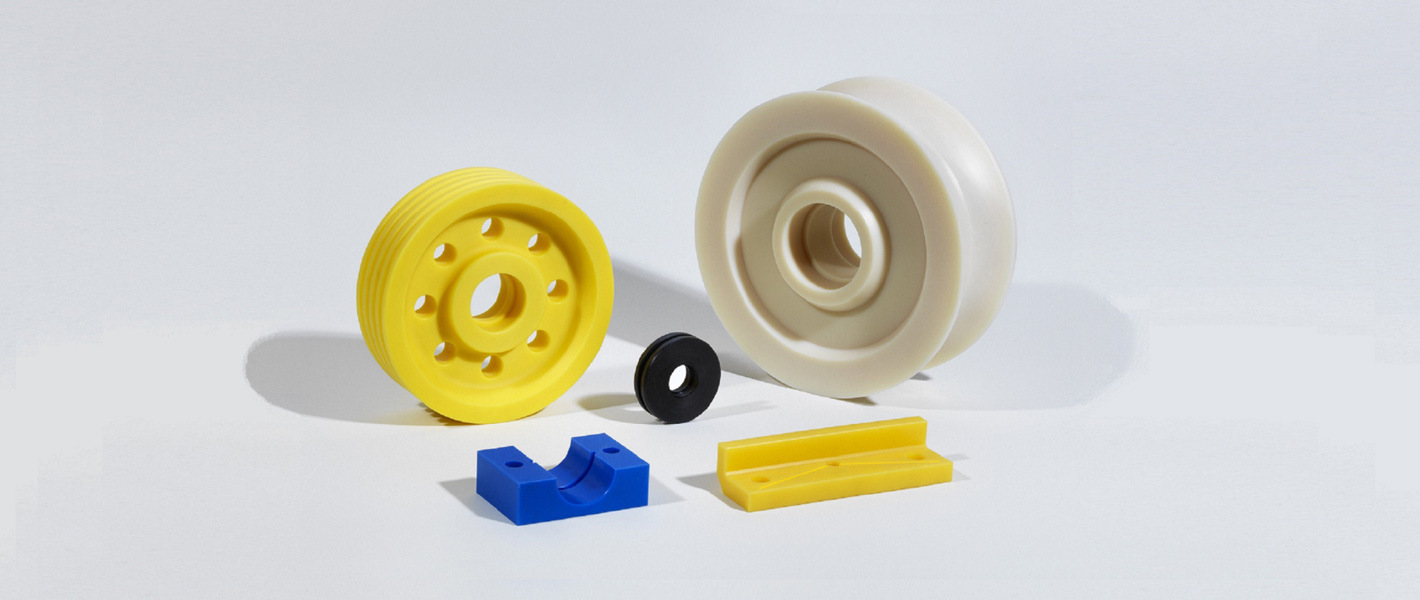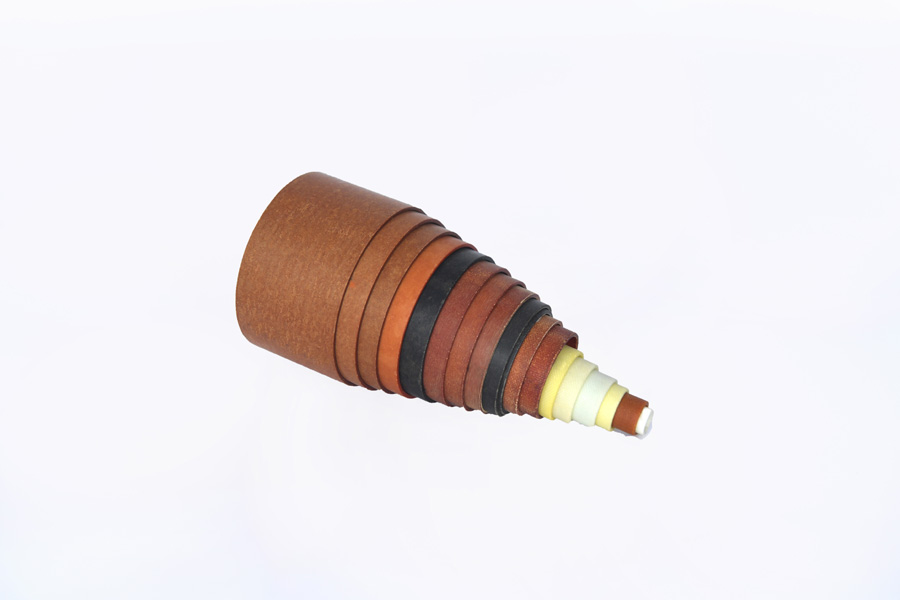- bearings
- spherical bearings
- engineering plastics
- friction material
- insulation material
Plastic friction materials are primarily used for dynamic and static braking. Brakes generally consist of a combination of materials. Usually they consist of different components made of steel and composite materials that make them suitable for a certain kind of braking. This includes steel belts with brake blocks used to brake something or a locking system. Friction materials are applied in many areas ranging from industrial cranes to a brake for a rail gripper used to attach rails together.
The balance between flexibility and wear-resistance
Steel on steel will slide. The friction material provides grip. This is why friction material must be flexible. It is softer than the material to which the braking force is applied. This results in wear because there is movement. The friction material wears out, but of course must not wear out too fast. This is why we always look for the most suitable material that as much as possible limits wear. Our aim is to achieve the controlled wear of the brake blocks.
The difference between dynamic braking and hold braking
We make a distinction between hold braking and dynamic braking. A hold brake is used to quickly stop movement, while a dynamic or slipper brake is primarily used to control movement. This places different demands on the material. Fibre mats soaked in resin are generally used for hold brakes. Compressed composites are often used for slipper brakes. If necessary, steel, glass or rubber particles are added to achieve the right composition that meets all of the specified requirements.
Environmental conditions are key for determining composition
The environment plays a key role in friction materials. Friction materials in a dry environment, such as an industrial hall, are subject to different demands compared to brake materials in a wet environment. In addition, the ambient temperature must be taken into account. Composites in a high-temperature environment require a different composition from composites in a low-temperature environment. Due consideration must also be provided to situations in which a brake is located close to a lubricated part which may be sprayed with oil. Naturally, providing for effective braking when there is oil on the friction material presents a greater challenge.
Friction materials are used in various places, such as:
- Machinery
- Winches
- Brake drums
- Couplings
- Industrial brakes
- Friction discs
- Friction plates
- Brake cams
- Brake plates
- Brake shoes
- Hold brakes
These parts are primarily used in shipbuilding, the offshore sector, machine construction, vehicles and agricultural implements. When parts with a long service life are required, plastics are the solution. There are various types of friction materials, each with its own properties and applications.
Over 30 years experience
We have over 30 years of experience and are able to accomplish a great deal in the field of mechanical components. There is virtually no requirement for which we are unable to find the right composition, such as sliding bearings, friction materials, a rotating plastic block and more. Contact us and present us with your plastics-related challenge. We will ensure that you receive the best possible part that meets the needs of your application.









